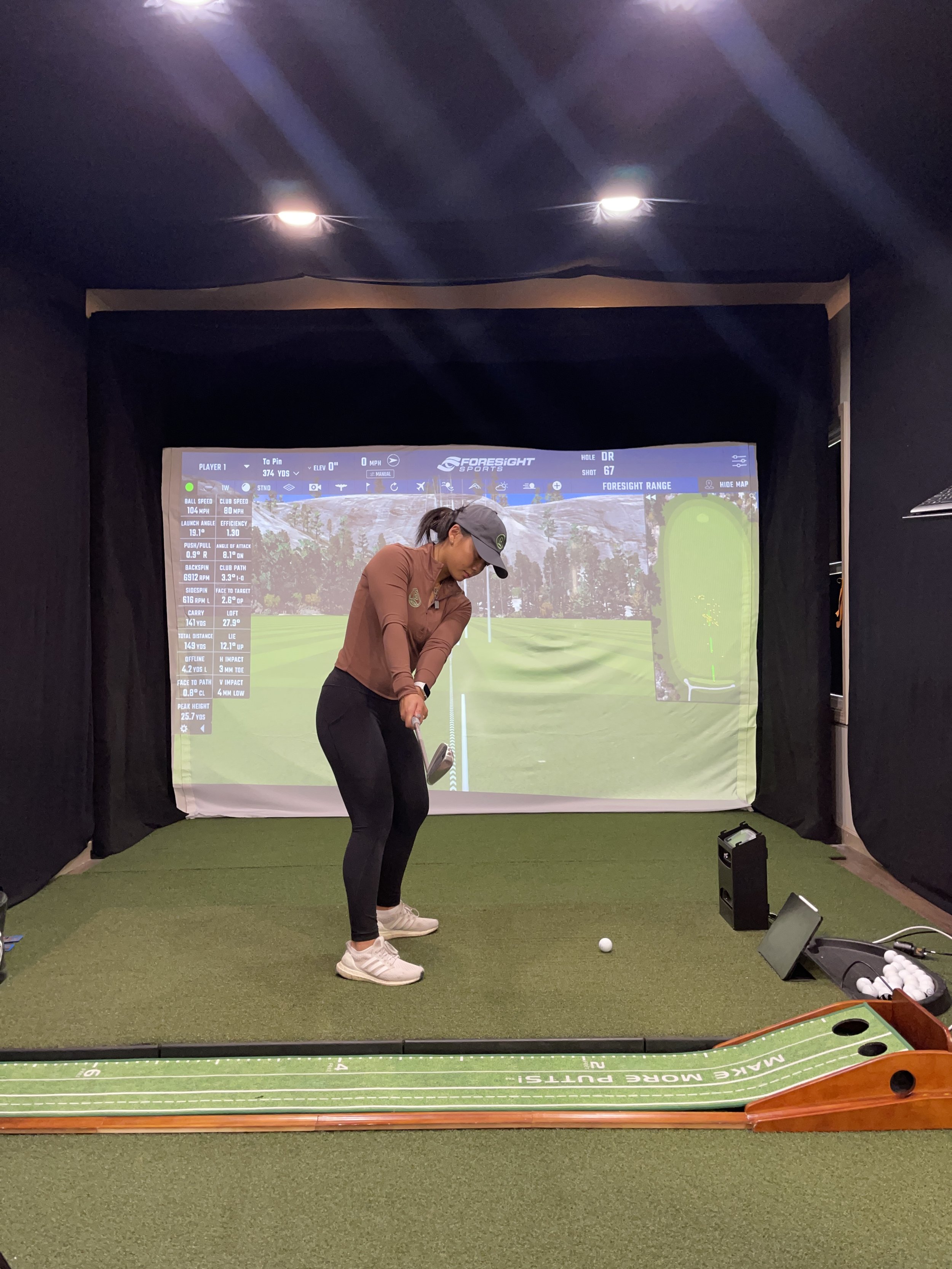How To Swing A Golf Club: The Golf Swing Sequence - With A Slow Motion Golf Swing Video
Mastering the art of swinging a golf club may appear simple, but achieving a perfect golf swing is a nuanced and personalized pursuit. This comprehensive guide serves as your pathway to mastering the golf swing sequence, whether you're an experienced golfer or a novice embarking on your golfing journey.
We will explore the basics of grip, stance, and swing mechanics, supplemented by a slow-motion golf swing video to aid visualization. Come along as we uncover the essential elements for enhancing your golf game and attaining lower scores.
Table Of Contents
The Basics of Golf Swing
Grip and Stance
Body Posture
Swing Mechanics
The Role of the Right Elbow in a Golf Swing
Importance of right elbow positioning
Impact on power and accuracy
How to Swing a Golf Club: The Backswing, Downswing, and Follow-Through:
Detailed breakdown of the complete golf swing
The Backswing
The Downswing: Ball Impact
The Follow-Through: Finisher
Common Mistakes When Swinging a Golf Club
Identification of typical errors
Tips to avoid these mistakes
The Basics of Golf Swing:
Before diving into the intricacies of a golf swing, it's crucial to understand that there's no one-size-fits-all approach. What works for one golfer may not work for another. The key is to find a method that suits you and stick with it. Let's start with the fundamental steps to lay the foundation for your golf swing improvement.
1. Grip and Stance:
There are many different ways to hold the golf club. We have about four different grips. We have the interlock, overlap, ten-finger grip, and cross-hand. All these grip techniques are a personal preference. However, it is recommended to grip the club in an interlocking grip. Your stance should be a comfortable position where you are balanced. The stance is your generator for power in your swing.
2. Body Posture:
The correct body posture is your way of being robust and stable throughout your golf swing. First, bend your knees and keep your body posture throughout the swing. A good way to set up a good posture is to bring the club up with arms straight out, bend over with the club until it hits the floor, and bend your knees afterward.
3. Swing Mechanics:
Now, let's break down the actual golf swing. It should follow a smooth arc, with your arms close to your body during the swing. This fluid motion is crucial for generating power and achieving shooting accuracy.
The Role of the Right Elbow In A Golf Swing:
The right elbow plays a pivotal role in your golf swing. Unfortunately, many amateur golfers neglect its importance, resulting in a loss of both power and accuracy.
Your right elbow should maintain a 90-degree angle during the swing, allowing your left arm to do the heavy lifting. Keep your right elbow close to your body throughout the downswing to avoid losing power and accuracy. Snap your right elbow forward at the bottom of your swing to maximize power generation.
How to Swing a Golf Club: The Backswing, Downswing, and Follow-Through:
The Golf Swing Sequence: Backswing, Downswing, and Follow-Through:
You must understand and execute the complete golf swing sequence to perfect your golf swing.
1. The Backswing:
The backswing contains 5 points to pay attention to: the pictures under show, point 1, point 2, Downswing, Impact and theFollow Through:
During the backswing in golf, there are two crucial points to focus on positioning yourself correctly. As you initiate the backswing, the clubhead should move away from the ball in a straight line, and it's essential to keep your elbows close to your body while moving your arms into the first position. Maintaining a straight left arm and keeping the clubhead parallel to the ground is important as you reach the first position.
Moving into the second position, which is the top of your swing, you should ensure that the club head and your arms are positioned behind your body. When you bring your club to the top of the swing, it's crucial to incorporate hip rotation, as it plays a significant role in generating power for the subsequent downswing.
2. The Downswing: Ball Impact
The downswing represents a pivotal phase in the golf swing, particularly for achieving accurate ball striking. When transitioning from the top of the backswing to the downswing, it's crucial to allow gravity to play its part in bringing the club down. As the club begins its descent, the key is to initiate body rotation toward the target, with the hips and legs serving as the primary power sources for the downswing.
As you are on your downswing, you want to keep your head and eyes on the ball until you make contact. The downswing is essentially a full-body strength movement, where your entire body contributes to the swing's power and precision.
3. The Follow-Through: Finisher
The follow-through holds great significance in your golf swing as it represents the culmination of your swing motion. Failing to complete the follow-through strongly can lead to losing power transfer from the downswing. The desired way to finish your follow-through involves initiating a hip rotation toward the target, followed by the rotation of your torso with the follow of the arms and club. After striking the ball, you should shift your body weight towards the left side of your left foot.
Common Mistakes When Swinging a Golf Club:
Many golfers, especially beginners, fall into common traps when swinging a golf club. Here are some prevalent mistakes to avoid:
Ignoring Personal Limitations: Golf swings are highly individualized, so don't attempt to replicate someone else's style. Find a swing that suits your physical capabilities.
Neglecting Proper Techniques: Even professional golfers take lessons to master the art of the swing. Invest time in learning the basics to improve your game effectively.
Lack of Practice: Consistent practice is the key to refining your golf swing. Establish a practice routine and stick to it for noticeable improvements.
Conclusion:
To swing a golf club effectively, you want to master the art of gripping, body positioning, and swing execution. Keep your head steady, rely on your body for power, and practice diligently. By following these tips and dedicating time to practice, you'll refine your golf swing, achieve lower scores, and enjoy a more rewarding golfing experience.






